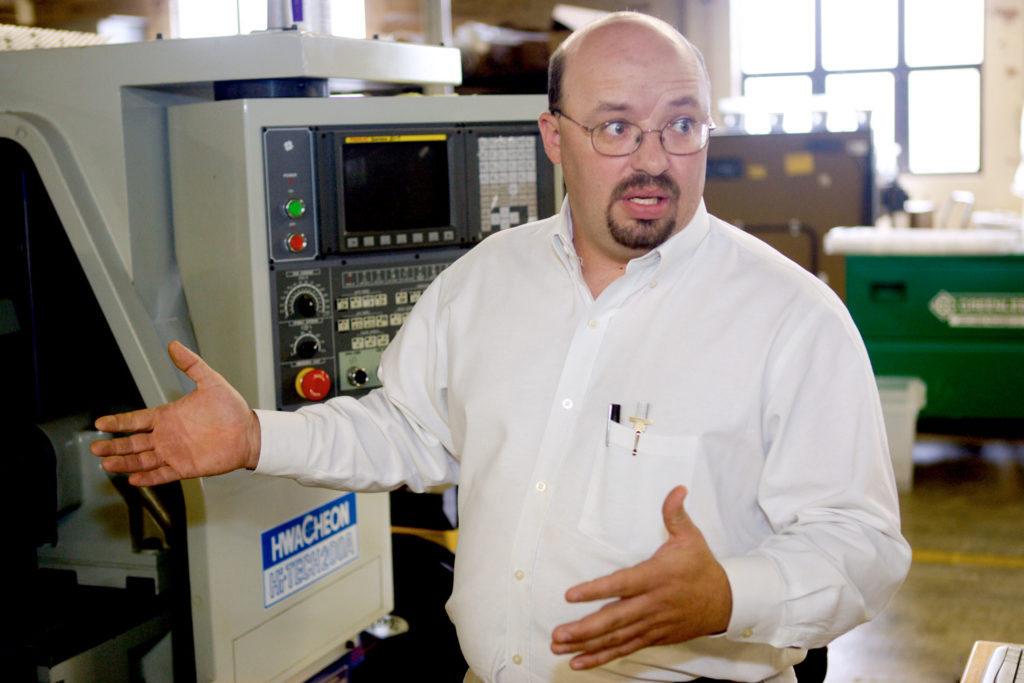The 10 people who work in the UGA instrument shop on Whitehall Road are always busy drawing, welding, programming and designing mechanisms that are integral to research at UGA. Lewis Fortner, the shop’s department manager, talked about the instrument shop’s role in UGA research.
Columns: What does the instrument shop do?
Fortner: We design, build, repair and modify scientific research instrumentation for the University of Georgia. Anything researchers have designed, read about or just have an idea that they would like to build-they bring the idea to us and we can build it. We also repair anything that is broken, from low-temperature incubators to centrifuges. We charge for our services, but only what it costs to make an instrument or repair.
Columns: Where do you get the designs?
Fortner: The ideas come from everywhere: scientific publications, peer reviews, papers. We’ve made instruments based on drawings on paper napkins. A lot of times researchers just have an idea of what they want to accomplish and we can go from that to detailed drawings.
For example, today we’re working on a vacuum chamber, a peanut butter dispenser, an instrument for sampling the surface of coral reefs without disturbing the coral itself, and a semi-automatic nematode elutriator.
Columns: And what is that?
Fortner: It’s a machine that removes nematodes from soil samples. The soil sample is put into a cone. Water and air are added, and the machine extracts the nematodes so that they can be counted.
Columns: Can you build anything?
Fortner: When we say we can build anything, we really have built pretty much everything. The range of projects that people have brought in is amazing.
Our projects are so varied it’s hard to know where to start. We build things for every department on campus involved in physical research, from very small things for the nanotechnology researchers up to large implements for the agriculture college, from small acrylic boxes to 500-gallon paper pulpers for paper-bleaching research. We have made termite food-a cube of wood-and carbon dioxide beds for putting flies to sleep.
We’re working right now on a whale-disentanglement tool for the Georgia Right Whale Project. Whales get tangled up in the lines from commercial fishing nets. The line from the nets gets right behind their flippers and cuts down into the whale. The line can actually kill the whale. So this instrument works kind of like a guillotine. When the trigger touches the whale, the blade descends and cuts the line.
Every day it is fun to come to work because there is something new to do. I wouldn’t say there is one thing more memorable than something else because what I’m working on today is just as interesting to design as what I worked on the first day I came here 17 years ago.
Columns: What kinds of skills and talents do you need to work here?
Fortner: We are machinists and welders. To start with you have to have a mechanical inclination and, increasingly, computer skills and experience in electromechanical interface. In the past, most motion and timing devices were mechanical, using a cam and a motor to make an instrument move; now we are building programmable robots with electromechanical controllers. Today we may be working with wood and plastics-tomorrow, titanium and ceramics.
Columns: Who are your customers?
Fortner: Everyone on campus can have work done by the shop if they want or need to. We work for staff, faculty, students and departments.
We have been doing a lot of work with art students recently. They are doing lot of physical art in the art school right now, and the students have all kinds of interesting ideas about things they want to build. They bring the ideas to us and we help them with the construction of the custom pieces that are needed.
Columns: Do you patent these designs?
Fortner: That is up to the customers. Patents are between the customer and the legal department.
